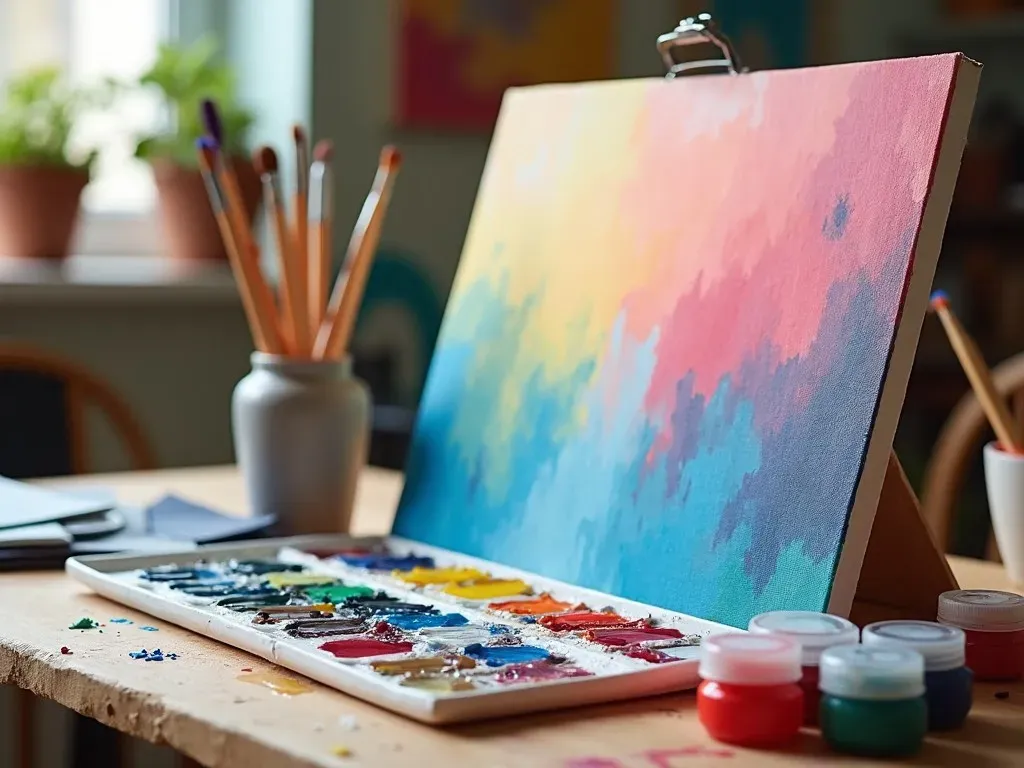Best acrylic painting tutorials for beginners guide you through the mesmerizing world of acrylic paint, offering practical painting instructions that transform novices into confident artists. Whether you’re just starting or looking to enhance your skills, mastering acrylic painting techniques can be incredibly rewarding.
Choosing the Right Supplies
Before diving into your painting journey, gather the essential Supplies. Here’s a concise table outlining what you’ll need:
| Supply | Purpose |
|---|---|
| Acrylic Paints | The main medium for your artwork. |
| Paintbrushes | Various sizes for different effects. |
| Canvas or Paper | Surfaces to paint on. |
| Palette | Mixing colors effectively. |
| Water Container | Cleaning brushes and thinning paint. |
| Rag or Paper Towels | Wiping brushes and cleaning spills. |
Types of Acrylic Painting Techniques
- Washing: A thin layer of paint to create a translucent effect.
- Dry Brushing: Use a dry brush with little paint for textured effects.
- Layering: Apply multiple layers of paint for depth and richness.
- Glazing: Transparent color layer over dried paint for luminosity.
- Sgraffito: Scratching into wet paint to reveal underlying layers.
Understanding these Techniques is key to exploring your artistic style.
Best Acrylic Painting Tutorials for Beginners
Finding quality tutorials can make a difference in your learning process. Here are some of the standout options available online:
1. The Art Sherpa
With over 600 free acrylic painting videos, The Art Sherpa offers a wide range of step-by-step tutorials. Each lesson is designed for beginners, making it easy to follow along as you create stunning artworks.
2. Angela Anderson’s Beginner Basics
Angela’s YouTube playlist features simple, engaging lessons that cover various acrylic painting techniques. Her tutorials are approachable and friendly, catering specifically to new artists.
3. Skillshare’s Step By Step Tutorials
Skillshare brings together a collection of 15 step-by-step tutorials. Each session is crafted by experienced artists to ensure you get a comprehensive learning experience.
4. Will Kemp Art School
Will Kemp’s site provides solid acrylic painting lessons for beginners, filled with simple projects and expert advice. The resources cover everything from color theory to technique application.
5. Foundmyself’s 20 Free Tutorials
A great resource offering a list of 20 free, full-length acrylic painting tutorials. They guide you through essential tips and step-by-step instructions to ease you into the world of acrylic painting.
Popular Acrylic Painting Projects for Beginners
Below are some easy yet fulfilling projects that beginners can tackle:
| Project | Description | Key Techniques Used |
|---|---|---|
| Simple Landscape | Create a serene landscape using washes. | Washing, Layering |
| Abstract Color Mixing | Experiment with colors for an abstract art. | Dry Brushing, Glazing |
| Floral Still Life | Paint a simple flower arrangement. | Layering, Sgraffito |
| Basic Portrait | Learn the fundamentals of portrait painting. | Layering, Glazing |
| Seasonal Themed Painting | Capture the essence of a season (e.g., Fall) | Layering, Dry Brushing |
These projects serve as a perfect way to practice different techniques while cultivating your personal style.
FAQs About Acrylic Painting for Beginners
What are the differences between acrylic and oil paints?
Acrylic paints dry much faster than oil paints, allowing for quicker layering and adjustments. They are also water-soluble, making them easy to clean while wet.
Is acrylic painting suitable for beginners?
Absolutely! Acrylics are forgiving and versatile, making them ideal for beginners. As they dry quickly, artists can easily apply multiple layers without waiting long.
What type of canvas should I use?
For beginners, canvas boards or stretched canvases are great options. Additionally, acrylic-friendly paper is perfect for practice.
How do I achieve different textures with acrylics?
Experiment with various techniques like dry brushing, palette knife applications, and layering to create rich textures.
Can I mix acrylics with other mediums?
Yes! Acrylics can be mixed with mediums like gels or pastes to alter their consistency and effect.
Final Thoughts
With a myriad of options for best acrylic painting tutorials for beginners, your artistic journey awaits. Use the resources mentioned and experiment with different techniques and projects to develop your unique style. Enjoy the process and remember, practice makes perfect!
